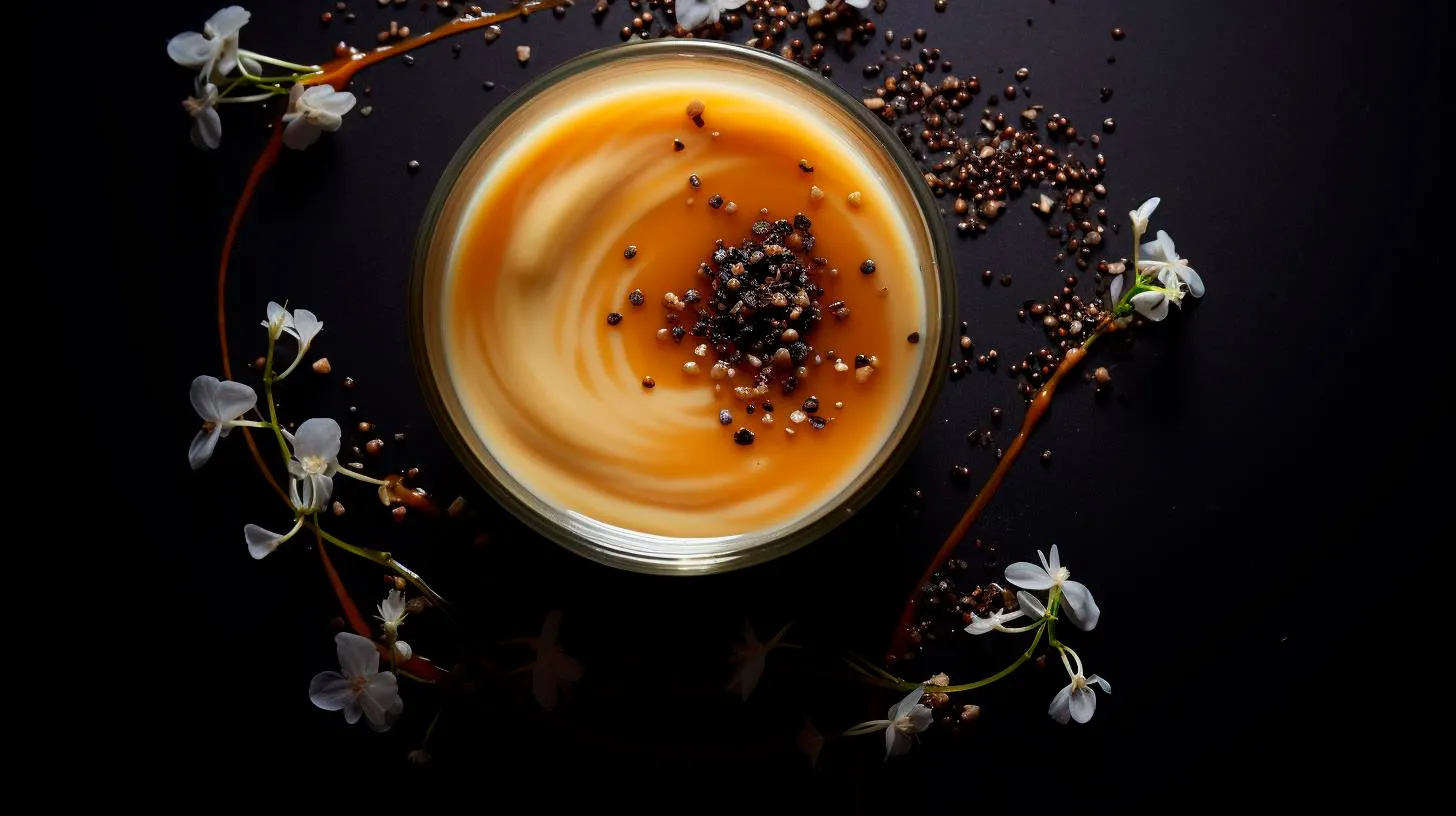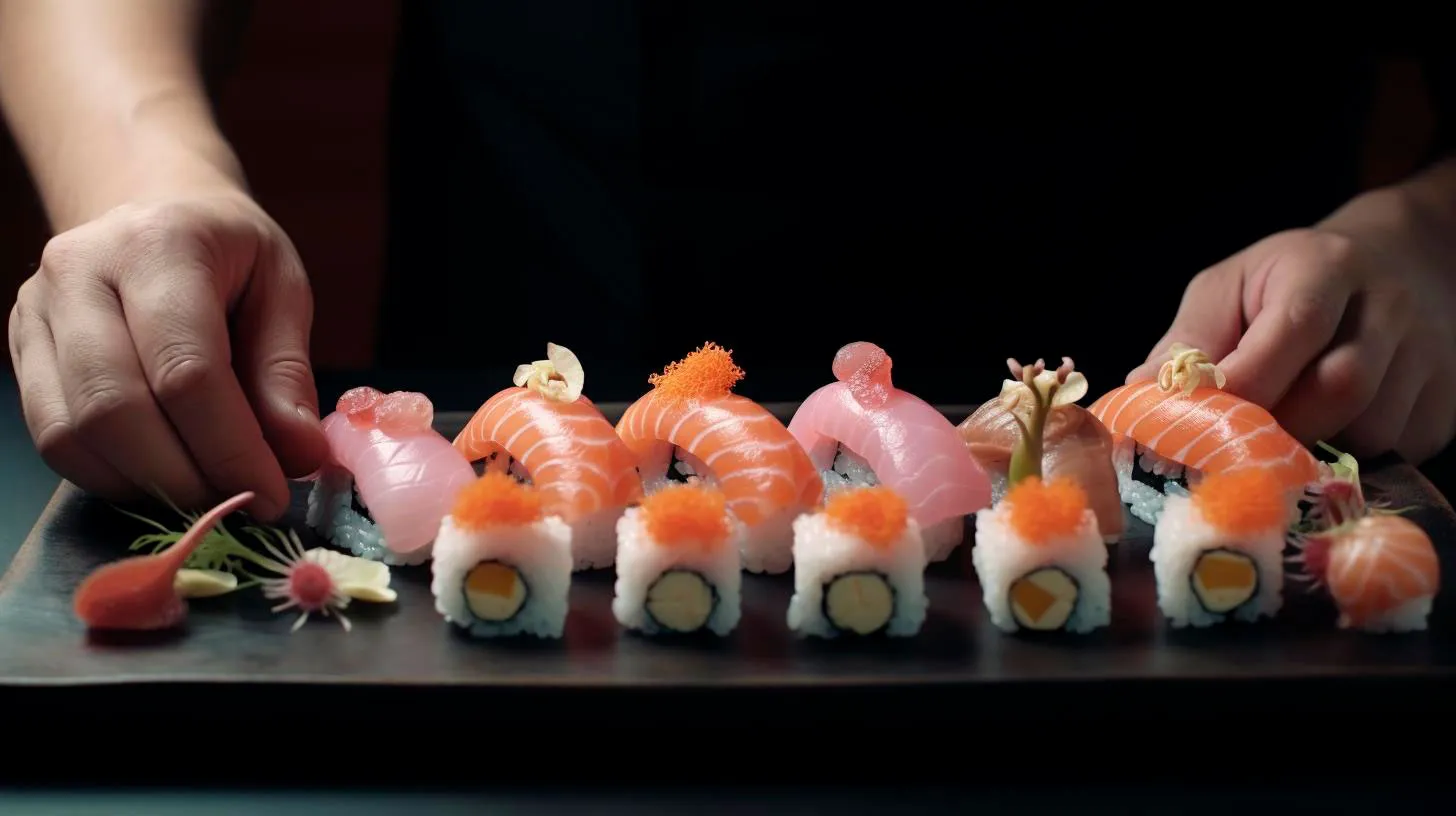The Transition from Home Cook to Sushi Chef
The Art and Science of Sushi
Sushi is not merely a dish; it is an art form that combines craftsmanship, precision, and creativity. As you embark on your journey to become a sushi chef, it is essential to understand the fundamental techniques and principles behind this culinary art. Here are the key steps to mastering the art of sushi:
- Education and Training: Start by investing in professional culinary education or sushi-specific training programs. These courses will provide you with the necessary foundation and knowledge to excel in the kitchen.
- Knife Skills: Mastering knife skills is crucial for any chef, but it’s particularly important for sushi chefs. Learn how to handle and maintain your knives properly, as precision cutting is a key component of sushi preparation.
- Rice Mastery: Sushi rice is the heart of any sushi dish. Understanding how to cook and season the rice correctly is essential. Practice until you can consistently create perfectly seasoned rice.
- Fish Selection and Quality: Sushi is all about the fish, so knowing how to select and source the best-quality seafood is crucial. Familiarize yourself with different fish types, their flavors, and the best regions for sourcing them.
- Sushi Rolling Techniques: Experiment with different rolling techniques such as maki, nigiri, and sashimi. Each requires its own skill set and precision. Practice regularly to improve your speed and consistency.
- Food Safety: Handling raw fish requires strict adherence to food safety guidelines. Ensure you are well-versed in proper handling, storage, and cleanliness to prevent any risk of foodborne illnesses.
The Benefits of Becoming a Sushi Chef
Now that we’ve explored the steps involved in becoming a sushi chef, let’s look at some of the advantages and benefits of pursuing this culinary career:
- Creative Expression: As a sushi chef, you have the opportunity to express your creativity through beautiful culinary creations. Each dish is like a work of art.
- High Demand and Job Opportunities: The demand for skilled sushi chefs is constantly growing, both within traditional sushi restaurants and modern fusion establishments. Enjoy a wide range of career options in various culinary settings.
- Financial Rewards: Skilled sushi chefs often command higher salaries due to the specialized knowledge and expertise required for this profession.
- Cultural Appreciation: Sushi is deeply rooted in Japanese culture. Embracing this culinary art form allows you to develop a deeper understanding of Japanese traditions and customs.
- International Collaboration: As sushi gains popularity worldwide, many sushi chefs have the opportunity to travel and collaborate with renowned chefs from different countries.
Key Takeaways for Aspiring Sushi Chefs
Becoming a sushi chef is a rewarding and challenging journey. Here are some key takeaways for those aspiring to transition from a home cook to a professional sushi chef:
- Invest in professional culinary education or specialized sushi training programs.
- Master knife skills and the art of precise cutting.
- Practice and perfect the art of sushi rice preparation.
- Learn about different fish types, their flavors, and the best sourcing practices.
- Experiment with various sushi rolling techniques and aim for consistency.
- Adhere to strict food safety guidelines to ensure the health and safety of your customers.
- Embrace your creativity and see sushi preparation as an opportunity for artistic expression.
- Take advantage of the high demand for sushi chefs and explore various career opportunities.
- Enjoy the financial rewards and cultural appreciation that come with being a skilled sushi chef.
- Keep learning and stay updated on the latest trends and techniques in the sushi industry.
Embarking on the journey from a home cook to a sushi chef requires dedication, passion, and perseverance. By following the steps outlined in this article and continuously honing your skills, you can achieve your dream of becoming a professional sushi chef. Remember, sushi is not just food; it’s an art form that brings joy and satisfaction to both the chef and the customers.
Sushi Knife Essentials: The Must-Have Tools for Perfect Sushi-making
1. Yanagiba Knife: The Master of Precision
The Yanagiba knife, also known as the “willow blade,” is often hailed as the king of sushi knives. With its long and slender design, this traditional Japanese knife allows for precise slicing of fish, resulting in thin strips of clean cuts.
- Features:
- Single-edged blade for sharper and cleaner cuts
- Long and narrow blade for excellent control and precision
- High-quality carbon or stainless steel construction
- Advantages:
- Perfect for slicing raw fish due to its fine cutting-edge
- Ensures clean cuts to maintain fish freshness and taste
- Ideal for delicate slicing techniques like “sashimi”
- Key Takeaway:
- A Yanagiba knife is essential for achieving precise, paper-thin cuts of fish used in sashimi and nigiri sushi.
2. Deba Knife: Mastering the Art of Filleting
The Deba knife is a heavy-duty knife primarily used for filleting fish and preparing sushi ingredients. Its thick spine and strong blade make it perfect for tackling tough tasks like cutting through fish bones and cartilage.
- Features:
- Thick, sturdy blade for heavy-duty cutting
- Single bevel or double bevel, depending on the intended use
- Durable and robust construction for increased longevity
- Advantages:
- Efficiently fillet fish with precision, including removing bones and skin
- Perfect for tougher ingredients like octopus and shellfish
- Ideal for cutting through small bones and cartilage
- Key Takeaway:
- A Deba knife is essential for filleting fish, preparing sushi ingredients, and handling tougher tasks, ensuring professional-quality results.
3. Usuba Knife: Precision in Vegetable Preparation
While sushi is heavily focused on fish, mastering the vegetable preparation is equally important. The Usuba knife, also known as the Nakiri knife, is designed specifically for precision cutting of vegetables used in sushi.
- Features:
- Thin and double-edged blade for clean vegetable cuts
- Rectangular shape with a squared-off tip for efficient chopping
- High-carbon stainless steel blade for excellent sharpness
- Advantages:
- Ideal for precise vegetable slicing, dicing, and mincing
- Ensures uniformity in vegetable cuts for aesthetically pleasing sushi rolls
- Efficiently chops herbs and garnishes
- Key Takeaway:
- An Usuba knife is essential for perfecting the art of vegetable preparation, resulting in visually appealing and delicious sushi rolls.
4. Takobiki Knife: Mastering Octopus and Seafood
When it comes to dealing with octopus, eel, and other seafood, the Takobiki knife proves to be an invaluable tool for sushi chefs. Its long, slender blade ensures precise cuts and elegant presentations.
- Features:
- Long, thin blade for clean slicing of octopus and seafood
- Single or double-edged, depending on preference
- Sturdy construction for longevity
- Advantages:
- Efficiently slices delicate seafood without tearing or crushing
- Perfect for creating elegant presentations of sushi toppings
- Ideal for making precise rolls with intricate designs
- Key Takeaway:
- A Takobiki knife is essential for mastering the art of octopus and seafood slicing, resulting in visually stunning sushi creations.
In conclusion, sushi knife essentials play a vital role in achieving perfect sushi rolls. From the precise cuts of the Yanagiba knife to the heavy-duty tasks handled by the Deba knife, each type serves a unique purpose in sushi-making. Mastering the art of sushi requires investing in the right tools, ensuring optimal results. So, equip yourself with these essential knives and embark on a culinary journey, creating your own sushi masterpieces!
Exploring Traditional and Fusion Sushi Rolls
Today, we will take a closer look at both traditional and fusion sushi rolls, exploring their unique characteristics, advantages, and key takeaways.
Traditional Sushi Rolls
Traditional sushi rolls, also known as maki sushi, follow the classic Japanese preparation and presentation. They typically consist of vinegared rice, nori (seaweed), and a variety of fillings. Here are some key aspects of traditional sushi rolls:
- Authentic Flavors: Traditional sushi rolls showcase the pure and authentic flavors of Japanese cuisine. Common fillings include fresh seafood, vegetables, and pickled ingredients.
- Simple Preparation: Making traditional sushi rolls requires skill and precision. Chefs carefully layer the ingredients and roll them tightly using a bamboo mat called a makisu. This technique ensures a firm and uniform shape.
- Health Benefits: Traditional sushi rolls tend to be low in calories and fat, making them a healthy dining option. They are also rich in omega-3 fatty acids and other essential nutrients found in seafood.
Fusion Sushi Rolls
Fusion sushi rolls offer a modern twist to the traditional concept, infusing different flavors and ingredients from various cuisines. This fusion approach adds a unique and exciting element to the sushi experience. Here’s what sets fusion sushi rolls apart:
- Creative Combinations: Fusion sushi rolls bring together unexpected combinations of ingredients. You may find rolls that incorporate avocado, cream cheese, mango, or even tempura-battered fillings. These creative pairings offer a different taste sensation.
- Influence of Global Cuisines: Fusion sushi rolls draw inspiration from different culinary traditions, such as Mexican, Thai, or Hawaiian. This diverse range of influences creates an eclectic fusion of flavors that will surprise and delight your palate.
- Expanding Food Options: Fusion sushi rolls cater to those seeking adventurous dining experiences. They provide an opportunity to explore unique flavors while still enjoying the essence of sushi. It’s a great choice for those looking to try something new.
Key Takeaways
As you indulge in the world of sushi rolls, keep these points in mind:
- Traditional sushi rolls offer authentic flavors, simple preparation, and health benefits.
- Fusion sushi rolls provide creative combinations, influence from global cuisines, and expanded food options.
- Both traditional and fusion sushi rolls offer a range of choices to suit different preferences and tastes.
- Try traditional sushi rolls if you appreciate the subtlety and purity of Japanese cuisine.
- For those seeking a unique and adventurous dining experience, fusion sushi rolls are the way to go.
Now that you have a better understanding of both traditional and fusion sushi rolls, it’s time to embark on your culinary journey. Whether you prefer the authentic flavors of Japan or crave the excitement of fusion cuisine, sushi rolls are sure to satisfy your taste buds with their delightful combination of flavors and textures.
Remember, the beauty of sushi lies in its versatility and ability to adapt to different palates. So, the next time you visit a sushi restaurant, be adventurous and try a variety of rolls to discover your own personal favorites. Happy sushi tasting!



